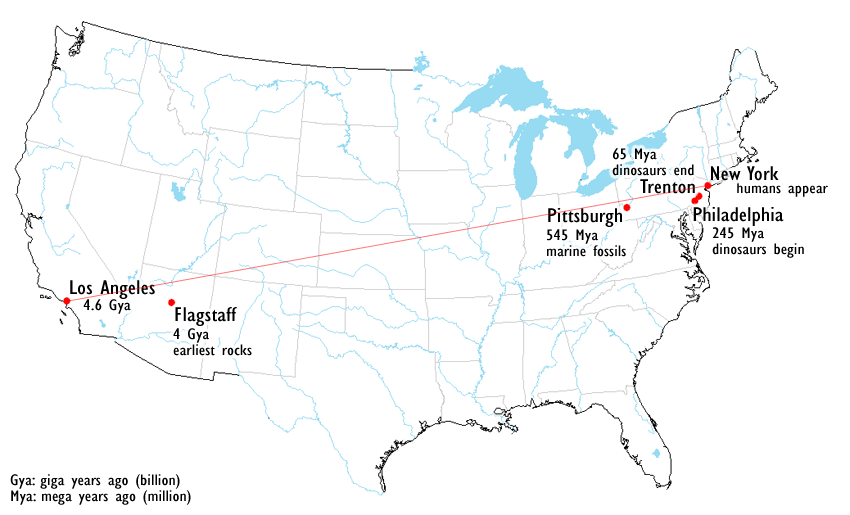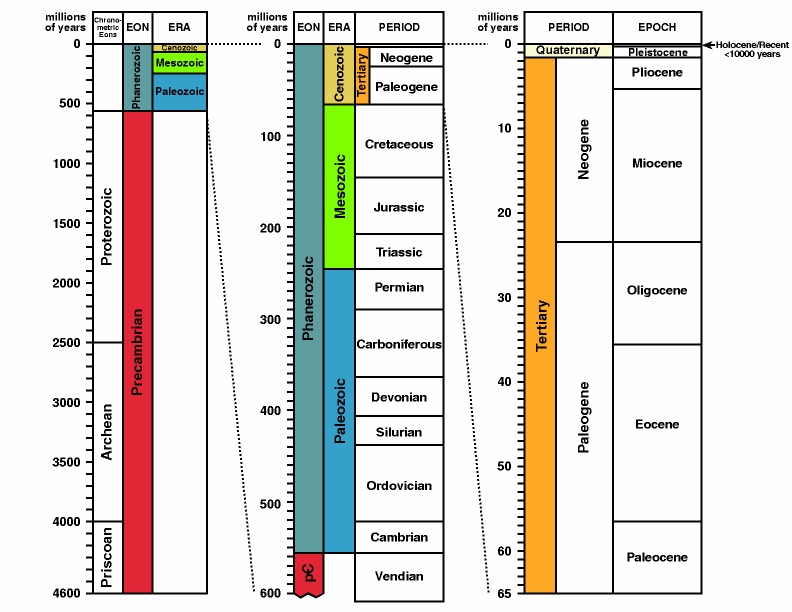Geologic Time—Lots of it
Now that we have an introduction to plate tectonics, we need to review one more concept that allows us to study plate tectonics and Earth's changes over time—yes, geologic time!
How long has the Earth been around—that is, what is the date for the earth's formation?
We know the Earth is dated to have formed 4.55 billion years ago. But can anyone really grasp how long ago that was? I mean, people operate on a very different time scale, right? We think about how many minutes are left in class, how many hours until lunch, how many weeks left in the semester...so years, especially BILLIONS of years, is a difficult concept to follow. Let's try to place earth's history into something a little easier to visualize. Take the distance from Los Angeles to New York City. That is approximately 4,500 miles—close to our 4.6 billion years if we want a visual scale. Now let's divide the route across country to significant milestones in earth's history. The earliest rocks date to approximately 4 billion years—that's about north-central Arizona. The earliest assemblages of marine fossils fall approximately 545 million years ago, at Pittsburgh. The dinosaur era came about 245 million years ago (Philadelphia) and ended 65 million years ago (Trenton). And humans...well, humans are about the width of a human hair on the sidewalk curb of New York City!

Earth Timeline, Source: Martin Gutowski, The Pennsylvania State University.
Note: Please click on the image to see a larger version.
The image below shows the actual geologic time scale. Take a careful look at each of the columns so you are certain how they fit together. Notice that the scale is different for each column - our ability to resolve geological events is best for the recent past and diminishes as we go farther back in geologic time.

A geologic time chart. Source: Geological Time Scale by Dr. Andrew MacRae.
Note: Please click on the image to see a larger version.
Before we continue, you are going to put some of the content of this lesson to use with a "Virtual Dating Lab..."